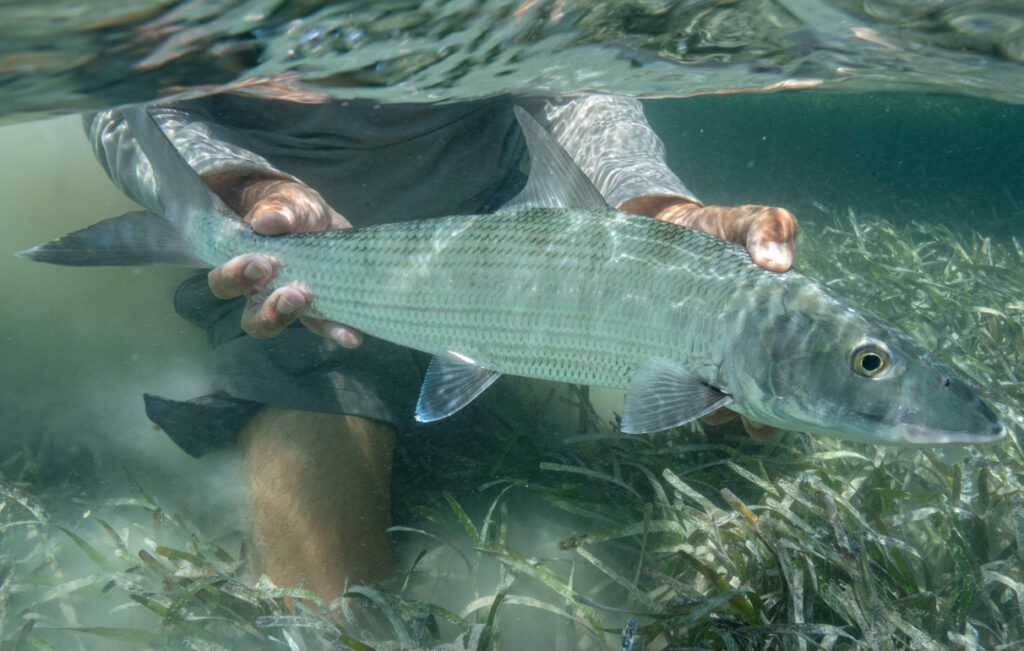A Florida Keys bonefish tagged and released. Photo: Ian Wilson
Bonefish & Tarpon Trust scientists are utilizing the latest technology and the historical knowledge of veteran guides to locate important bonefish spawning sites in the Florida Keys. Finding these nearshore areas where bonefish school by the thousands before migrating offshore to spawn in deep water is essential for their conservation. BTT has previously identified spawning sites in the Bahamas, Belize, and Cuba, yet the locations of the spawning sites in the Florida Keys remain a mystery.
“There are a couple possible reasons that might explain the lack of known spawning sites in the Keys,” said Dr. Ross Boucek, BTT’s Florida Keys Initiative Manager. “Maybe for a time the size of the spawning school in the Keys shrank to the point that it wasn’t noticeable to us. Or maybe the size of the Keys population became so small that the fish completely stopped spawning for a period of time. Fish won’t spawn if there aren’t a critical number of spawning fish.”
From its work in the Bahamas, BTT knows how bonefish reproduce. During full and new moon cycles from fall through early spring, fish from as far away as 70 miles form pre-spawning aggregations (PSAs) at nearshore sites, where they prepare to spawn by porpoising at the surface and gulping air to fill their swim bladders. At night, they swim offshore and dive hundreds of feet before surging back up to the surface. The sudden change in pressure makes their swim bladders expand, causing them to release their eggs and sperm. After fertilization takes places, the hatched larvae drift in the ocean’s currents for between 41 and 71 days before settling in shallow sand- or mud-bottom bays, where they develop into juvenile bonefish.
In recent years, the Florida Keys bonefish fishery has made a comeback, and a number of Keys guides have reported seeing schools of bonefish in nearshore waters that might be PSAs. BTT is now using acoustic telemetry and drones to hone in on these possible spawning sites identified by local guides, some of whom first observed likely bonefish PSAs in Keys waters decades ago. This renewed search builds upon BTT’s previous work in the Keys and the Bahamas to decipher the life cycle of bonefish, their habitat use, movement patterns, and spawning behavior.
During the initial phase of the project, a 24-inch female bonefish tagged by Dr. Boucek near Big Pine Key was detected three months later more than 45 miles away, moving through the backcountry, then to the reef tract, in 100 feet of water, likely on her way offshore to spawn near the full moon in December. Since bonefish typically have a two or three-mile home range, this long-distance movement suggests that fish #8599 was going to spawn.
This discovery marks an exciting step in the right direction. “Capturing a part of 8599 migration gets us closer to finding Keys bonefish PSA locations, which is essential for conservation,” said Dr. Boucek.
To report a possible bonefish pre-spawning aggregation in the Florida Keys, please email: info@bonefishtarpontrust.org




